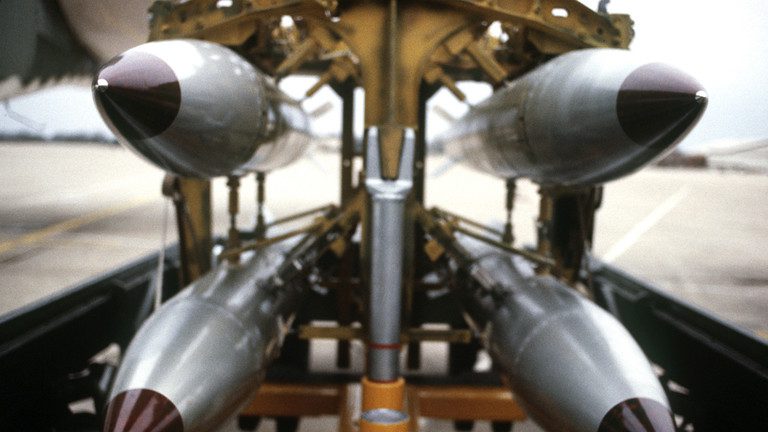World
US will “modernise” its primary nuclear weapon

The Pentagon has declared its intention to create the B61 airdrop variant 13.
The US Department of Defence made the update to its primary nuclear gravity bomb public on Friday. The B61-13 munition would be developed by the Department of Energy’s National Nuclear Security Administration (NNSA), subject to Congress’s approval and financing.
Under Secretary of Defence for Space Policy John Plumb remarked, “The B61-13 represents a reasonable step to manage the challenges of a highly dynamic security environment.” “Production of the B61-13 will not increase the overall number of weapons in our nuclear stockpile, but it will give us more flexibility.”
“Reflective of a changing security environment and growing threats from potential adversaries,” Plumb said of the announcement. But according to the Pentagon, the 2022 Nuclear Posture Review’s description of the security environment “reflects an ongoing assessment” of the situation, not “any specific current event.”
The B61-13 project, according to the Pentagon, would make use of the B61-12’s proven production capabilities along with its “modern safety, security, and accuracy features,” but with the B61-7 model’s far higher yield.
The B61-7 is a strategic bomb with a yield of up to 340 KT, whereas the B61-12 is a tactical weapon with a yield ranging from 0.3 to 50 KT. The military publication Stars and Stripes claims that the newest model might take the place of the soon-to-be-retired B83 and some B61-7s.
READ ALSO: Top general: Japan needs US nuclear weapons for defence
The B61 is the main air-dropped thermonuclear weapon in the US arsenal, having been designed in 1963. Tactical attack jets F-15 and F-16 may carry the bomb in addition to B-1B Lancer, B-2 Spirit, and B-52 Stratofortress bombers. Though it hasn’t been officially rated for it yet, the F-35 has been testing its ability to carry and deploy the bomb.
One component of the so-called Nuclear Triad consists of air-dropped nuclear bombs; the other two are intercontinental ballistic missiles (ICBMs), which can be stationed either on land or inside specially designed submarines. In order to face a hypothetical conflict with China and Russia at the same time, a recent report by the Senate Strategic Posture Commission called for a huge increase of the US military’s conventional capabilities as well as the “triad.”
A nonprofit organisation in Washington that keeps track of nuclear arsenals, the Federation of American Scientists, estimates that Russia has almost 5,900 atomic warheads in operation, while the US currently has about 5,200.
